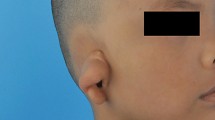Abstract
A prospective single blinded interventional study was held in Otorhinolaryngology Clinic, Universiti Kebangsaan Malaysia Medical Centre in August 2010 until November 2012 to evaluate the functional outcome of septorhinoplasty objectively and subjectively. Objective assessment was done using rhinomanometry and subjective assessment using Nasal Obstruction Symptoms Evaluation (NOSE) scale and Health-Related Quality of Life Questionnaires (HRQOL) in Rhino Surgery. All measurements were taken preoperatively and 3 months postoperatively. A total of 29 patients were enrolled and completed the study. Septorhinoplasty was commonly performed in Malays and Indians and rare amongst Chinese, with age ranged from 18 to 54 years. Majority had no history of trauma. Twisted nose was the most common external nose abnormality followed by crooked and saddle nose. All patients had internal valve insufficiency. There were significant improvement of the total and of all the parameters in the NOSE scale post septorhinoplasty (p < 0.05). Furthermore, there were significant improvement in total and in all parameters in HRQOL score post septorhinoplasty (p < 0.05). There were improvements in the rhinomanometry data bilaterally during inspiration and expiration, but were not statistically significant (p > 0.05). Significant correlations were noted in the improvement between the two subjective assessments (NOSE scale and HRQOL score). However, there was no significant correlation in the improvement between the subjective (NOSE scale and HRQOL score) with objective (rhinomanometry score) assessments. Septorhinoplasty improves the nasal airflow and quality of life of patients with nasal obstruction.



Similar content being viewed by others
References
Most SP (2006) Analysis of outcomes after functional rhinoplasty using a disease-specific quality-of-life instrument. Arch Facial Plast Surg 8(5):306–309
Toriumi DM (1996) The relative importance of septal and nasal valvular surgery in correcting airway obstruction in primary and secondary rhinoplasty. Plast Reconstr Surg 98(1):55–58
Rhee JS, Arganbright JM, MacMullin BT, Hannley M (2008) Evidence supporting functional rhinoplasty or nasal valve repair: a 25-year systemic review. Otolaryngol Head Neck Surg 139:10–20
Constantian MB, Clardy RB (1996) The relative importance of septal and nasal valvular surgery in correcting airway obstruction in primary and secondary rhinoplasty. Plast Reconstr Surg 98(1):38–54
Ballert JA, Park SS (2006) Functional rhinoplasty: treatment of the dysfunctional nasal sidewall. Facial Plast Surg 22(1):49–54
Schwentner I, Dejakum K, Schmutzhard J, Deibl M, Sprinzi GM (2006) Does nasal septal surgery improve quality of life? Acta Oto-Laryngol 126(7):752–757
Gendeh BS, Tan VE (2007) Open septorhinoplasty: operative technique and grafts. Med J Malaysia 62(1):13–18
Leong SCL, White PS (2004) A comparison of aesthetic proportions between the Oriental and Caucasion nose. Clin Otolaryngol 29(6):672–676
Farrior RT, Farrior EH, Cook R (2005) Special rhinoplasty techniques. In: Cummings CW, Flint PW, Harker LA et al (eds) Cummings otolaryngology, head and neck surgery, 4th edn. Elsevier Mosby, Philadelphia, pp 1078–1114
Andre RF, Paun SH, Vuyk HD (2004) Endonasal spreader graft placement as treatment for internal nasal valve insufficiency: no need to divide the upper lateral cartilage from the septum. Arch Facial Plast Surg 6:36–40
Rhee JS, Book DT, Burzynski M, Smith TL (2003) Quality of life in nasal airway obstruction. Laryngoscope 113(7):1118–1122
Clement PA (1984) Committee report on standardization of rhinomanometry. Rhinology 22:151–155
Suzina AH, Hamzah M, Samsudin AR (2003) Active anterior rhinomanometer analysis in normal adult Malays. J Laryngol Otol 117:605–608
Hirschberg A (2002) Rhinomanometry: an update. ORL 64:263–267
Bermuller C, Kirsche H, Rettinger G, Riechelmann H (2008) Diagnostic accuracy of peak nasal inspiratory flow and rhinomanometry in functional rhinosurgery. Laryngoscope 118(4):605–610
Rhee JS, Poetker DM, Smith TL, Bustillo A, Burzynski M, Dabis RE (2005) Nasal valve surgery improves disease-specific quality of life. Laryngoscope 115(3):437–440
Stewart MG, Witsell DL, Smith TL, Weaver EM, Yueh B, Hannley MT (2004) Development and validation of Nasal Obstruction Symptom Evaluation (NOSE) Scale. Otolaryngol Head Neck Surg 130(2):157–163
Kramer MF, Rasp G, Kastenbauer E (2003) Health-related quality of life in rhino surgery. Am J Otolaryngol 24(2):97–105
Won TB, Park KT, Moon SJ, Moon IJ, Wee JH, Moss T, Jin HR (2013) The effect of septorhinoplasty on quality of life and nasal function in Asians. Ann Plast Surg 71(1):40–44. doi:10.1097/SAP.0b013e3182414641
Gendeh BS, Mallina S (2008) Graft selection in rhinoplasty: indication and limitations. Med J Malaysia 63(1):35–38
McCaffrey TV, Kern EB (1979) Clinical evaluation of nasal obstruction, a study of 1000 patients. Arch Otolaryngol 105(9):542–545
Sipila J, Suonpaa J, Silvoniemi P, Laippala P (1995) Correlation between subjective sensation of nasal patency and rhinomanometry in both unilateral and total nasal assessment. ORL 57(5):260–263
Andre RF, Vuyk HD, Ahmed A, Graamans K, Nolst Trenite GJ (2009) Correlation between subjective and objective evaluation of the nasal airway. A systematic review of the highest level of evidence. Clin Otolaryngol 34:518–525
Jones AS, Wight RG, Crosher R, Durham LH (1989) Nasal sensation of airflow following blockade of the nasal trigeminal afferents. Clin Otolaryngol 14(4):285–289
Acknowledgments
This study was funded by Medical Research and Innovation Secretariat, UKM Medical Centre. Grant Number: FF-101-2011.
Author information
Authors and Affiliations
Corresponding author
Ethics declarations
Conflict of interest
Dr. Farah Dayana Zahedi, Associate Professor Dr. Salina Husain and Professor Dato’ Dr. Balwant Singh Gendeh declare that they have no conflict of interest.
Ethical approval
All procedures performed in this study were in accordance with the ethical standards of Research Ethic Committee Universiti Kebangsaan Malaysia (RECUKM) and with the 1964 Helsinki declaration and its later amendments or comparable ethical standards. Formal consent obtained from each of the individuals in this study.
Informed consent
Informed consent together with formal consent were obtained from all individual participants for whom indentifying information is included in this article.
Rights and permissions
About this article
Cite this article
Zahedi, F.D., Husain, S. & Gendeh, B.S. Functional Outcome Evaluation of Septorhinoplasty for Nasal Obstruction. Indian J Otolaryngol Head Neck Surg 68, 218–223 (2016). https://doi.org/10.1007/s12070-015-0899-3
Received:
Accepted:
Published:
Issue Date:
DOI: https://doi.org/10.1007/s12070-015-0899-3




